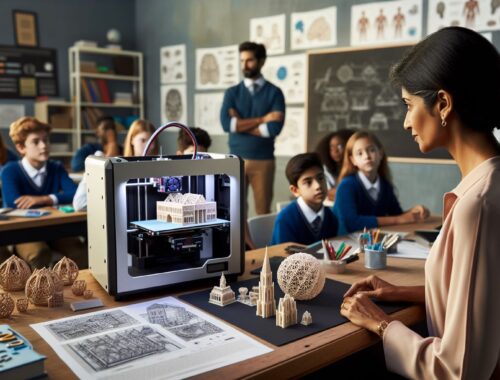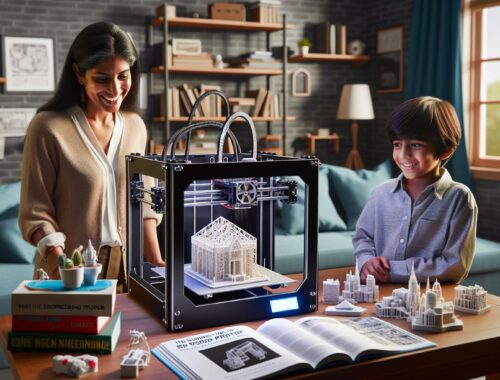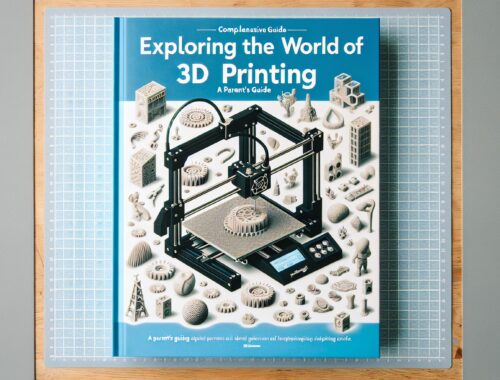All You Need to Know about 3D Modeling and 3D Printing for College Students
Introduction
Innovation and technology are constantly evolving, and the world of manufacturing is no exception. One revolutionary tool that has transformed industries and captured the imagination of students and professionals alike is 3D printing. This groundbreaking technology, coupled with 3D modeling software, allows users to transform virtual designs into physical creations. As a college student, learning about 3D modeling and 3D printing can be an exciting avenue to explore, giving you the opportunity to bring your creative visions to life. In this blog post, we will delve into the world of 3D modeling and 3D printing, discussing their applications, benefits, and how they can enhance your college experience.
The Basics of 3D Modeling
3D modeling is the process of creating digital replicas of objects or environments using specialized software. It involves breaking down physical objects into smaller components known as polygons, creating a three-dimensional representation of the original design. This digital model can then be manipulated, refined, and prepared for 3D printing. 3D modeling allows you to create intricate and complex designs that were once only achievable through traditional manufacturing methods.
Exploring the Possibilities of 3D Printing
Once you have a 3D model, the next step is to bring it to life through 3D printing. 3D printing, also known as additive manufacturing, is a process of creating physical objects layer by layer, based on a digital design. The printer reads the 3D model and uses materials such as plastic, metal, or even food substances to build the object. This innovative technology has opened up a world of possibilities, with applications ranging from prototyping and toy creation to building models and manufacturing final products.
Benefits of Learning 3D Modeling and 3D Printing
Creativity Unleashed
3D modeling and 3D printing provide an outlet for your creativity to flourish. Whether you’re an engineering student designing a prototype or an art student crafting a unique sculpture, these technologies empower you to transform your ideas into tangible objects. With 3D modeling, you can manipulate shapes, add intricate details, and experiment with different design iterations. The ability to hold a physical representation of your creation in your hands is immensely satisfying and can inspire further innovation.
Hands-On Learning
College is a time for exploration and hands-on learning, and 3D modeling and 3D printing complement this philosophy perfectly. By engaging with these technologies, you gain practical experience in bridging the gap between theory and practice. As you navigate the world of 3D modeling and printing, you develop problem-solving skills, become familiar with computer-aided design (CAD) tools, and gain insights into the manufacturing process. These skills are highly valued in various industries and can significantly enhance your employability.
Interdisciplinary Collaboration
One of the significant advantages of 3D modeling and 3D printing is their interdisciplinary appeal. These technologies bring together students from diverse fields, allowing for stimulating collaboration and knowledge sharing. Architecture students can collaborate with computer science students to create virtual walkthroughs, engineering students can join forces with art students to develop functional and aesthetically pleasing products, and medical students can explore applications such as creating custom anatomical models. Embracing these technologies can foster a sense of community, encourage innovation, and broaden your horizons beyond your chosen field of study.
Integrating 3D Modeling and 3D Printing into College Life
Course Integration
Many colleges and universities recognize the importance of 3D modeling and 3D printing, offering courses specifically tailored to these technologies. Taking advantage of these courses can provide you with a structured learning environment, access to industry-standard software, and expert guidance from instructors. Whether you are pursuing a degree in engineering, art, architecture, or any other field, exploring these courses can expand your skill set and open doors to exciting career opportunities.
Extracurricular Clubs and Organizations
Beyond formal coursework, extracurricular activities present excellent opportunities to engage with 3D modeling and 3D printing. Many colleges have student-run clubs or organizations dedicated to these technologies, where students can collaborate on projects, share knowledge, and exchange ideas. Joining such clubs allows you to apply your skills in practical scenarios, fostering a sense of camaraderie and providing a platform for networking with like-minded individuals.
Personal Projects and Entrepreneurial Ventures
Learning 3D modeling and 3D printing opens up avenues for personal projects and entrepreneurial ventures. The ability to create physical objects quickly and inexpensively can be a game-changer for individuals looking to bring their ideas to fruition. You can design and manufacture custom products, create prototypes for potential investors, or even start your own 3D printing business. The freedom and flexibility provided by these technologies can turn your college experience into an entrepreneurial journey, setting you up for success in the future.
Conclusion
The world of 3D modeling and 3D printing holds immense potential for college students. By integrating these technologies into your college experience, you can unleash your creativity, gain practical skills, collaborate across disciplines, and explore exciting career options. Whether you choose to enroll in dedicated courses, join student organizations, or embark on personal projects, learning about 3D modeling and 3D printing sets you on a path to discovering the wonders of additive manufacturing. Embrace this cutting-edge technology, and let your imagination run wild as you shape the future with your creations.
You May Also Like

Exploring the World of 3D Printing: A Guide for Educators
May 8, 2024
The Wonderful World of 3D Printers: A Parental Guide for Engineering Professionals
April 20, 2024